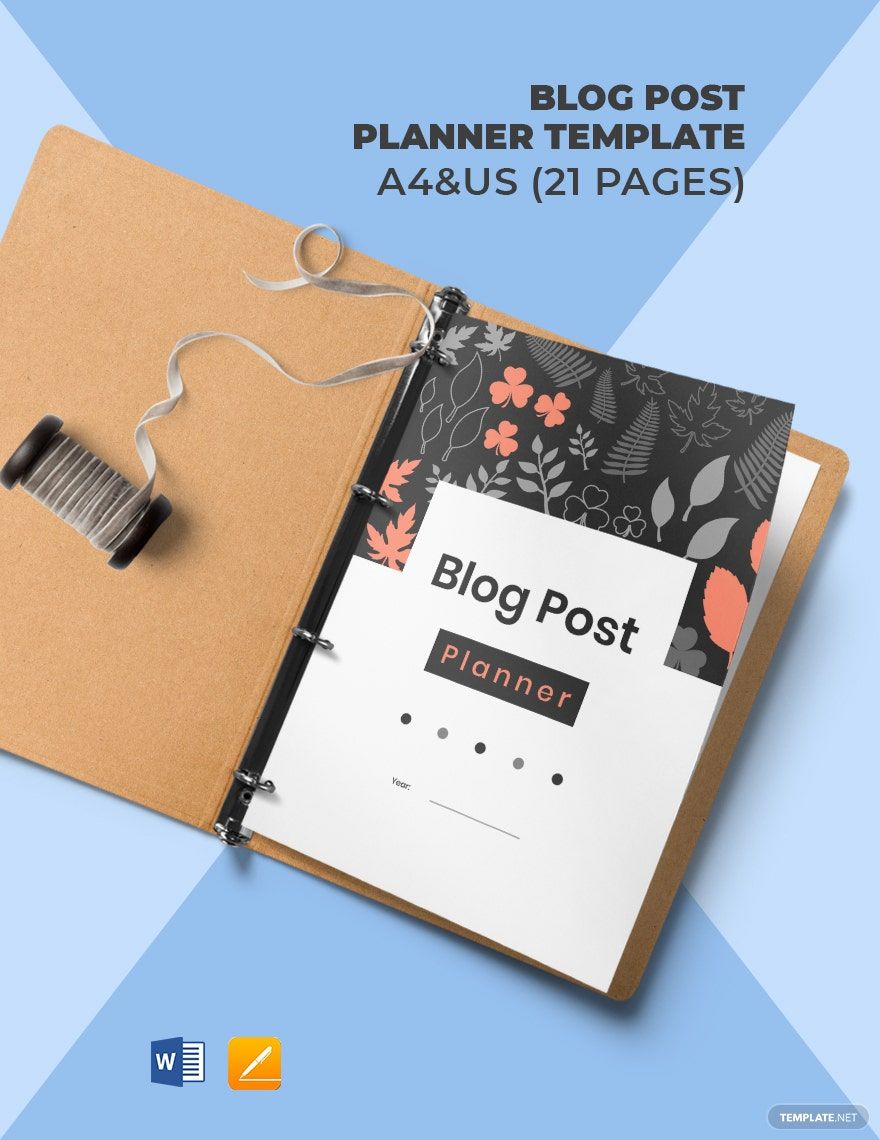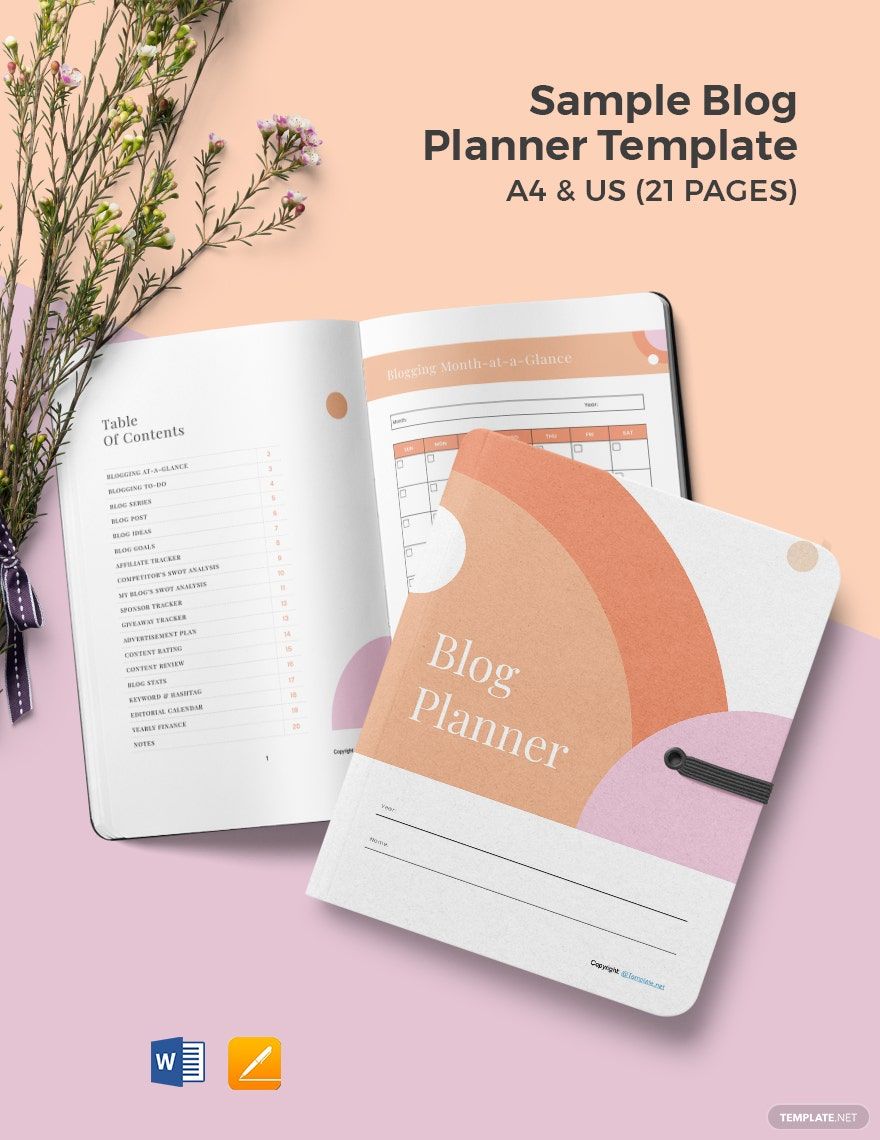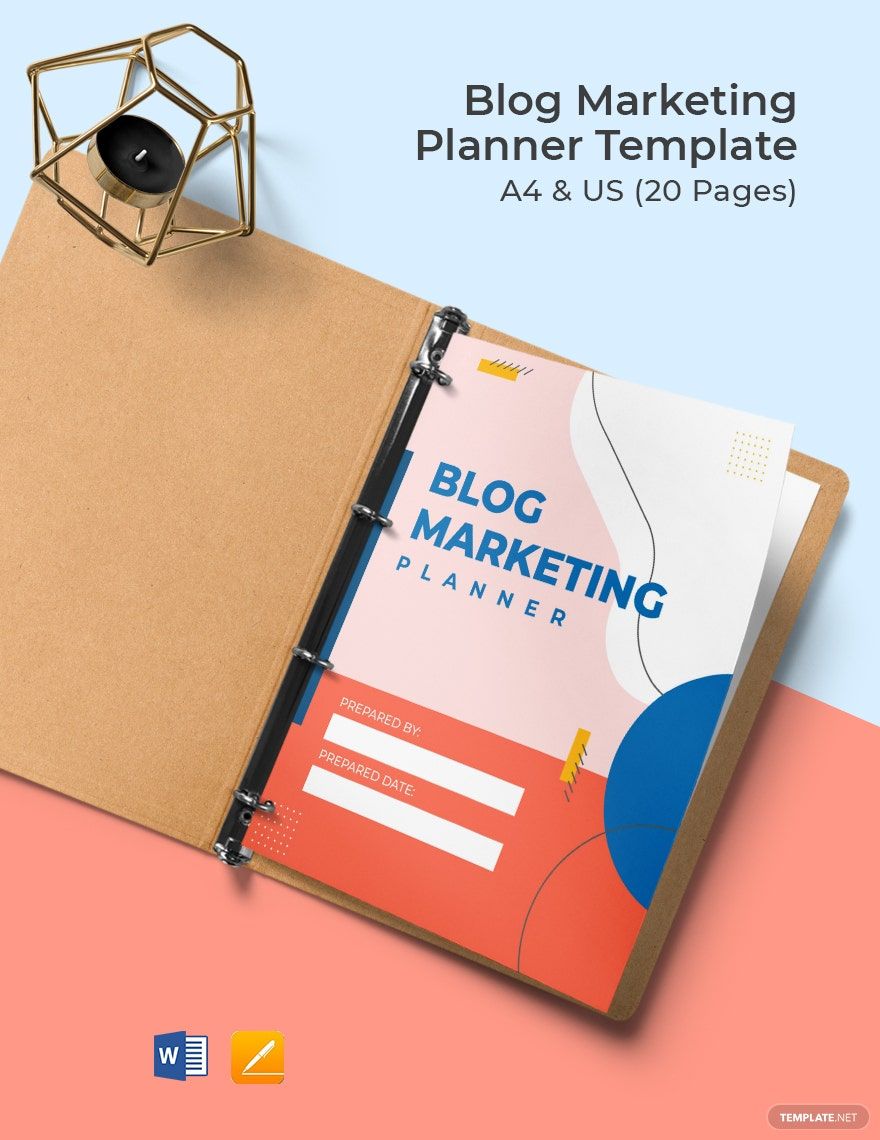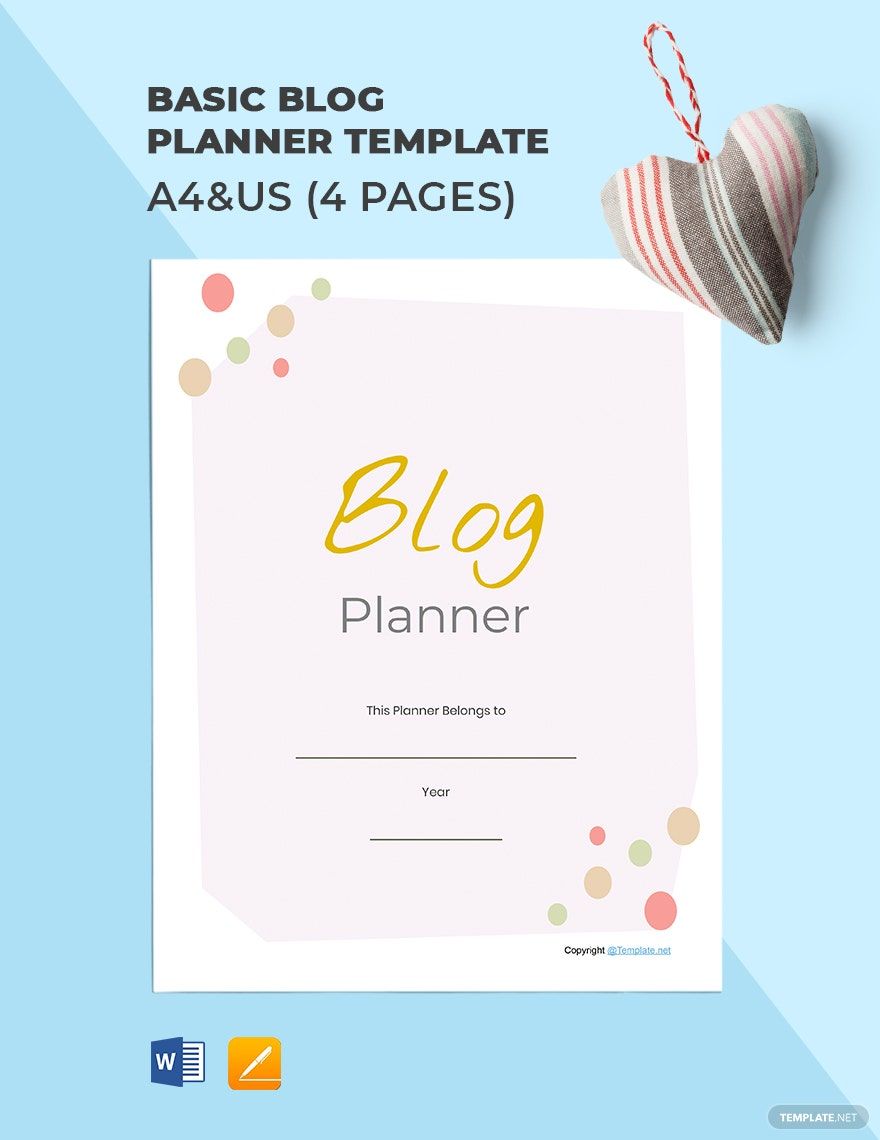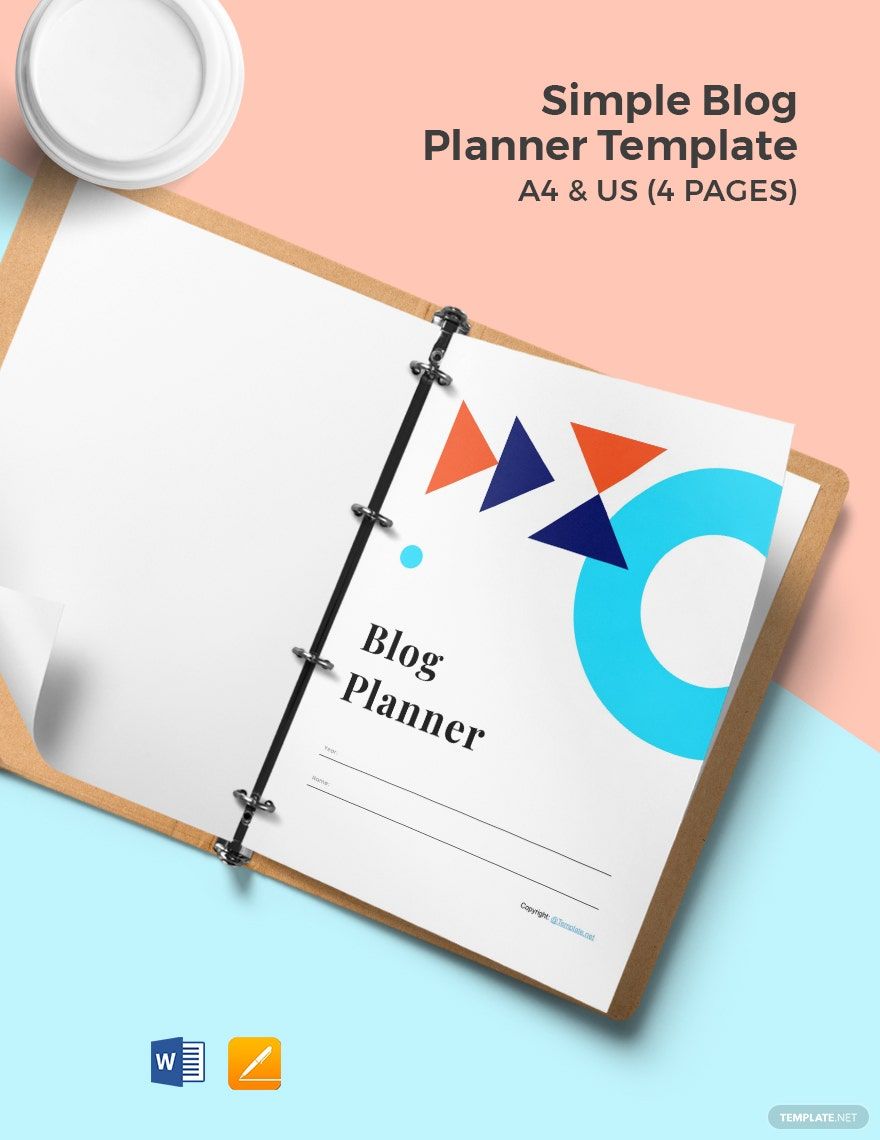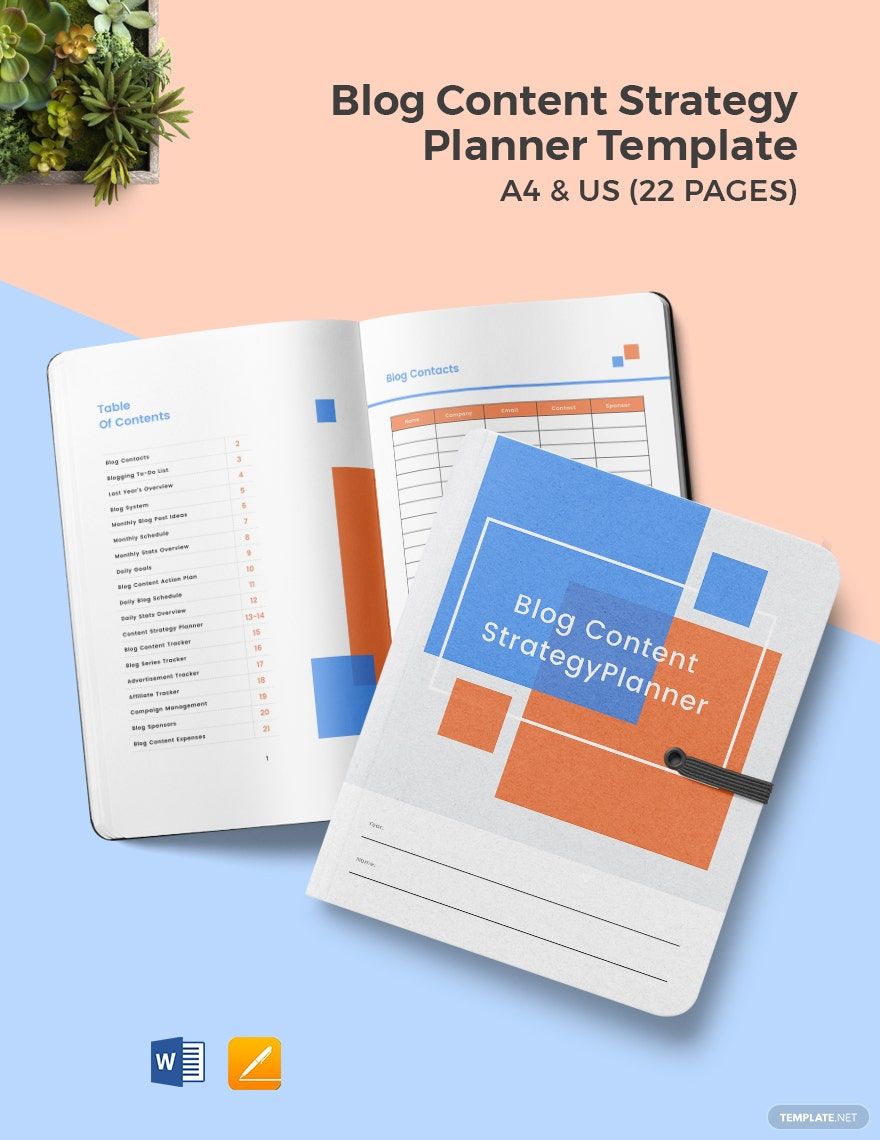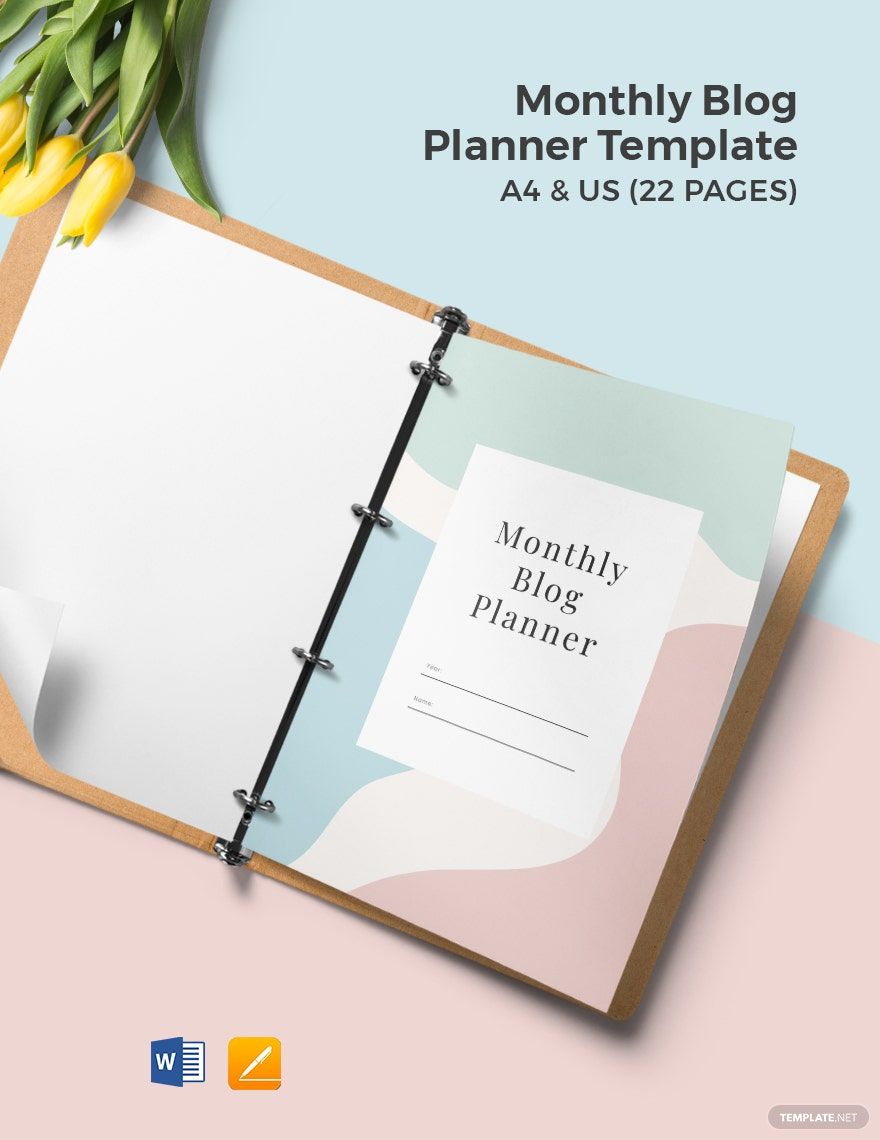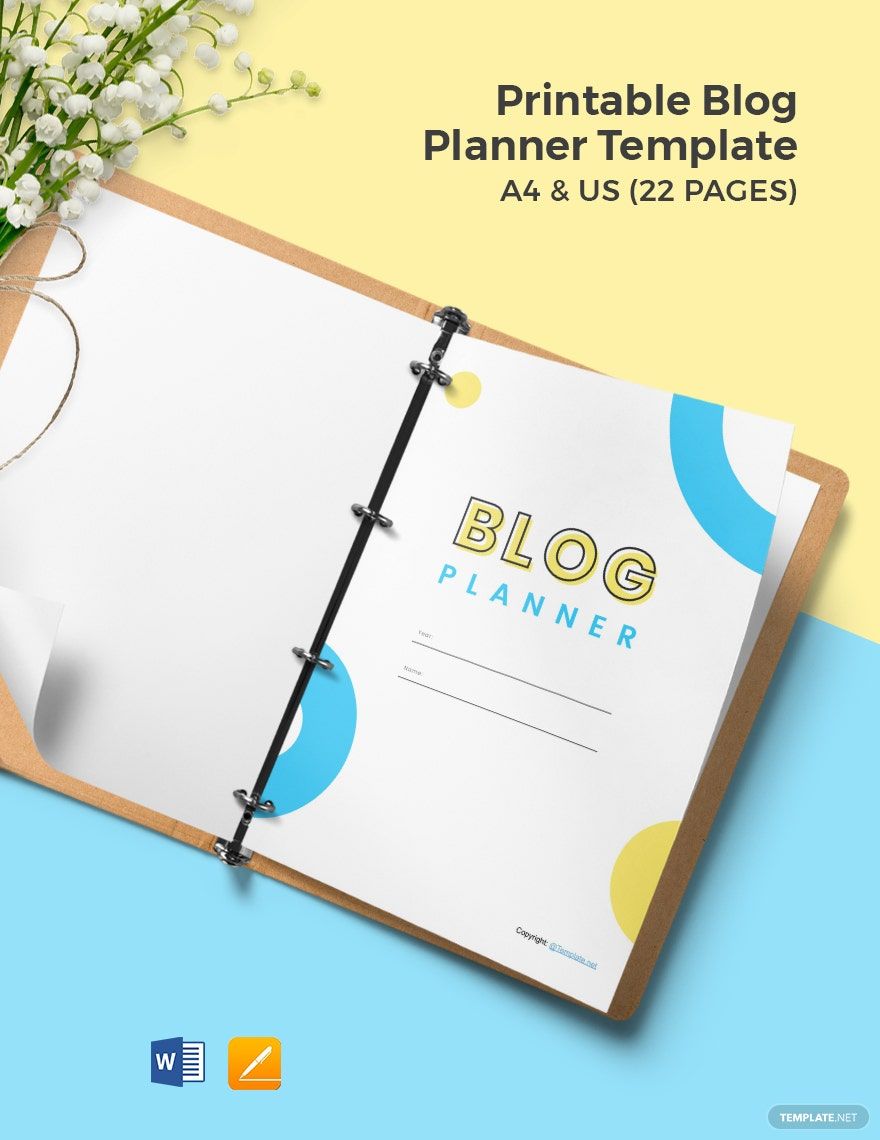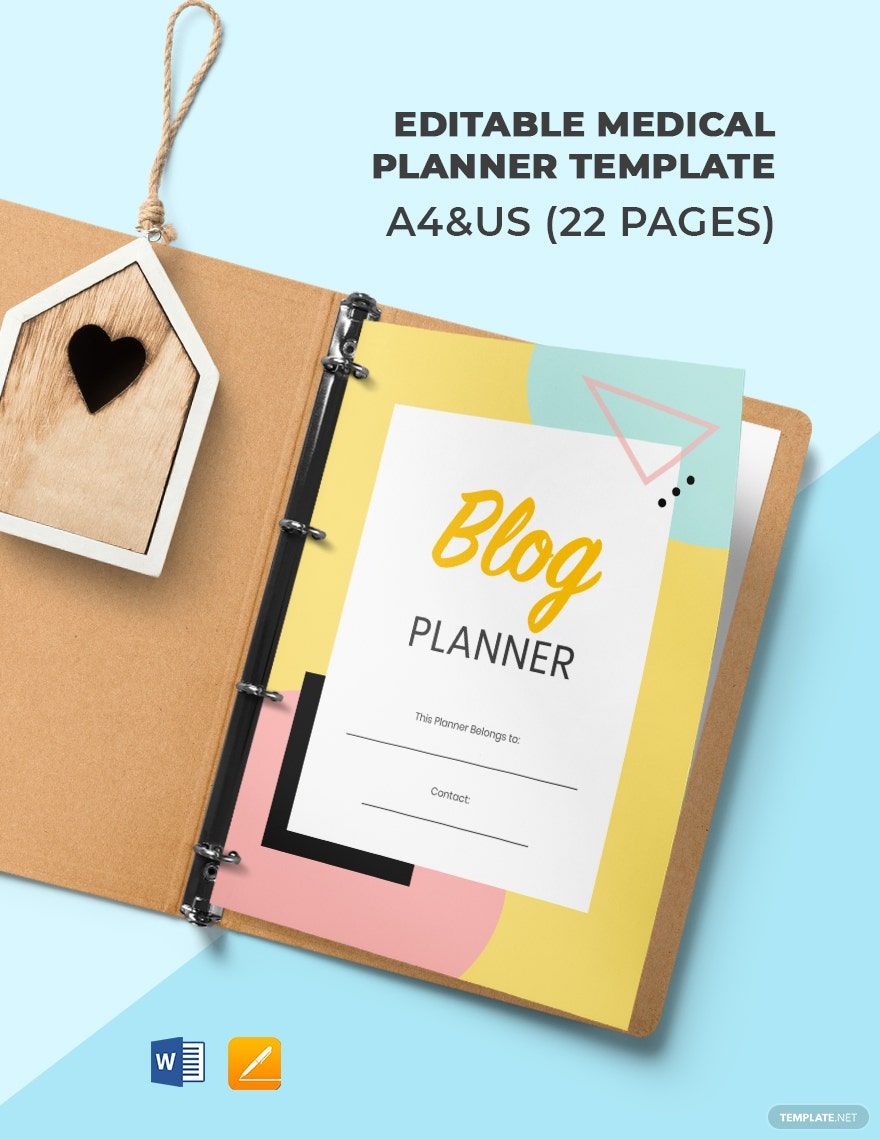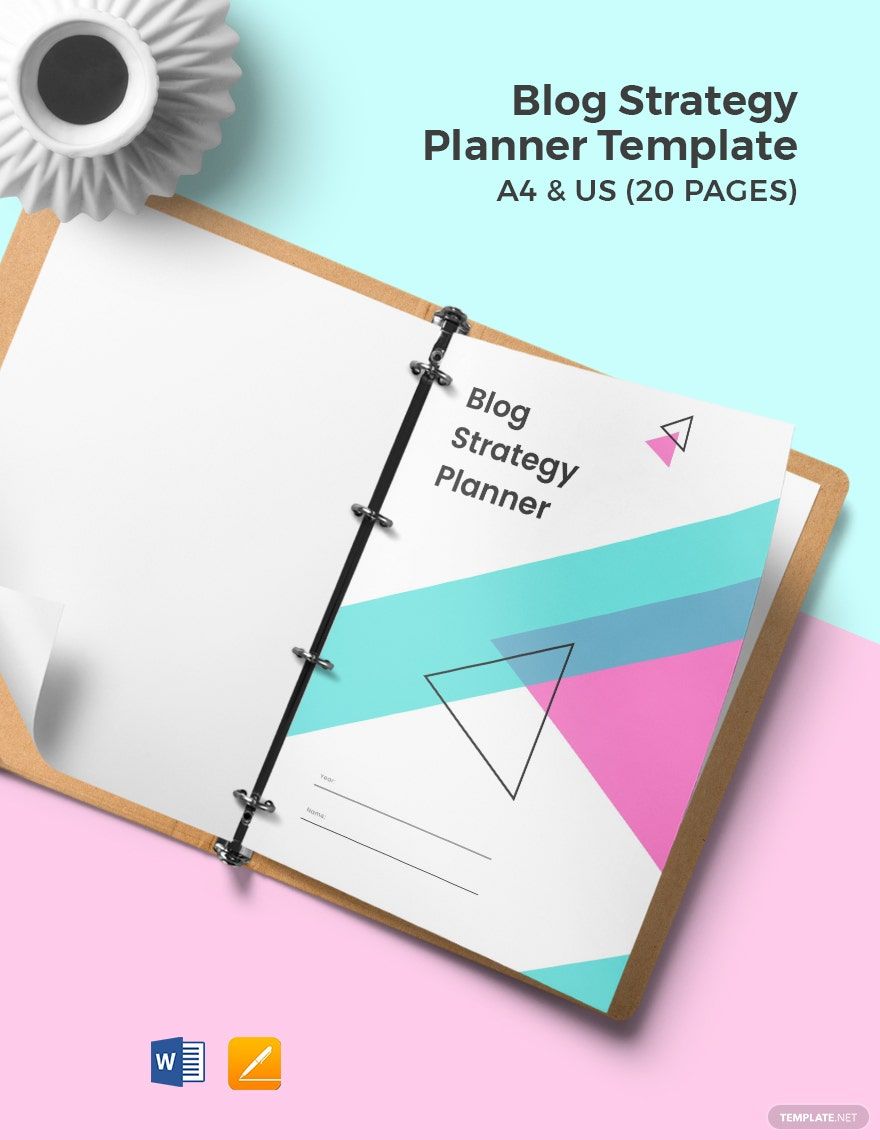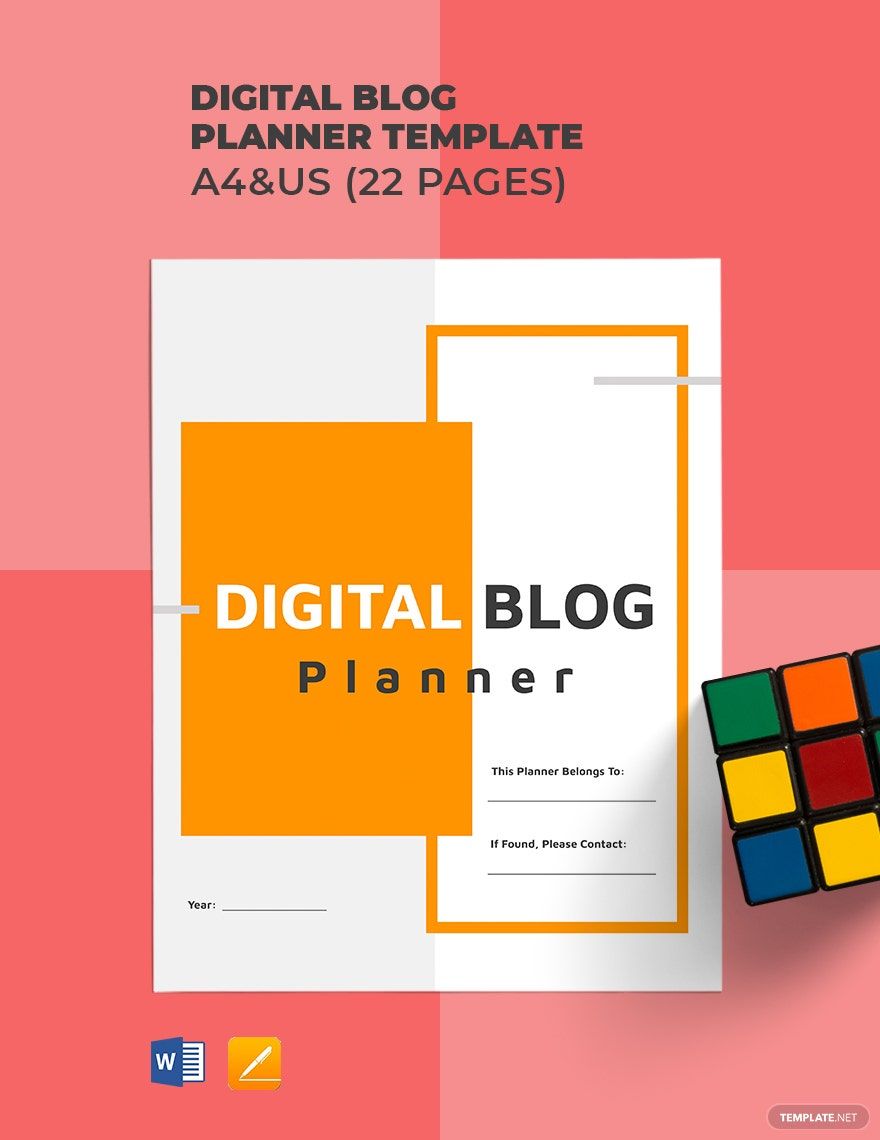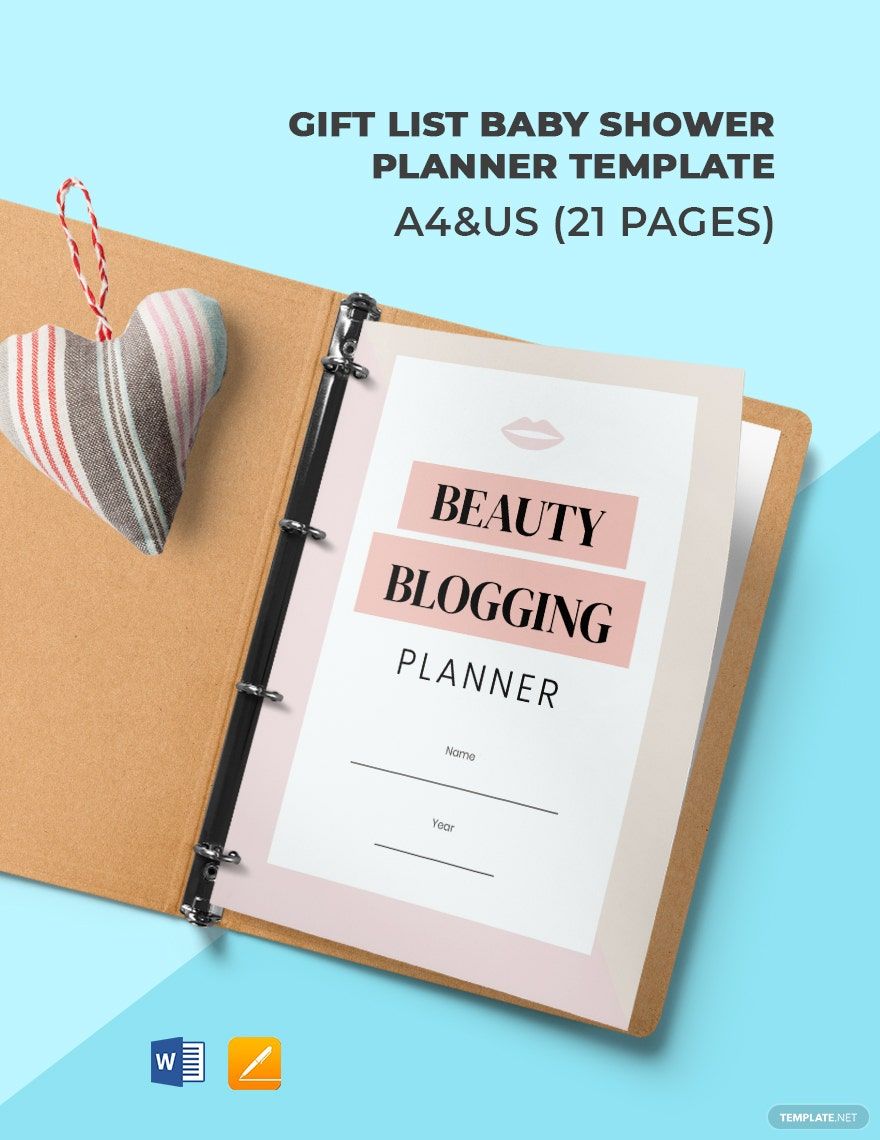Blogging has become a consistent trend in this modern age. This is because of its ability to deliver a strong market message as well as easily communicate with clients and investors alike. But because most businesses already have a website, making a stand out from the big sea called the internet can be quite intimidating. A good point why you need to plan strategically! Get yourself an effective and user-friendly planner now through our selections of Free Ready-Made Blog Planner Templates! It’s ready-made with suggestive outline and structure that you can keep still or modify. You can get yours in MS Word or Apple Pages, downloadable and printable in an instant! Download, use, and get ready to pop in the blogging industry!
How to Create a Blog Planner
Most companies and organizations have a website. Whatever your cause is and whoever you cater to, it is no question that websites work for generating business leads. According to HubSpot, about 55% of marketers have noted that blogging and content creation is one of their top inbound marketing priority. It is also noted in the same article that those who prioritize blogging are 13x more likely to achieve a productive return of investment. The use of statistics in blogs also enhances their readers and consumers’ trust with the company. Taking a look at all the benefits that blogging can achieve, it is safe to say that your business should create blogging efforts to achieve website traffic, improve your SEO, and get leads.
But before you can start writing out articles or blogs, you have to start creating a system or plan first. This is so you have the right amount of time to plan, research, write, edit, and even rest because writing can be quite tiring. So if you want to develop a blog planner, we have a few tips that you can use if you read more.
1. Being with the Calendars
To begin with, a planner cannot be complete without a calendar. No matter how you want to format your calendar, always begin creating your blog planner with it. It allows you to see the bigger picture in a particular time frame. This will aid you to plot you later on concepts and ideas with a futuristic mindset. Since blog planning seems to be a big project, you might include various sorts of calendars. You can embed in monthly, weekly, and/or daily calendars. Again, this can be in any sort of formatting, depending on your needs.
2. Map Out Your Ideas
It is when you conceptualize your blog topics the fun, excitement, and headache can begin. Even so, allow yourself to sit down and take a while in mapping out your ideas. Invest ample enough time for your ideation and research. More often, conceptualization can even take more than a day. Use your unique imagination and skill set! You sure have something to pop in the blogging industry.
Furthermore, be realistic in mapping it out on your blog ideas on your planner. State your agenda or tasks in simple, achievable steps.
3. Consider Internet Events
Blogging requires in-depth research about what's in the now within the internet. If you want to get your hard-worked blog post read, include relevant content elements. One of the many fundamental strategies to get this in is by employing SEO elements into your blog. SEO or Search Engine Optimization allows a website to get web traffic and good results. In your blog planner, insert a reminder section of your research notes. You may bullet-list it by the sides of your blog planner. Highlight when found necessary.
4. Distinct its Style!
So you can see a less stress-free blog/work environment, start it by decorating your blog planner design! After you've got to structure its functional elements, integrate your creativity on it. Put colors into your boxes, use artistic typefaces, insert cute signs or symbols, or paste stickers. This will help you drive your thoughts and imagination.
One of the major reasons why we ensure our template products easy to personalize for any users!
